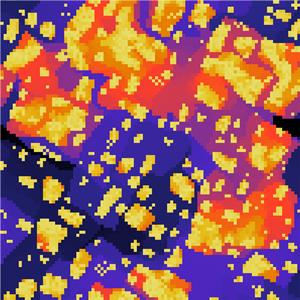 When cooled too rapidly, liquids fail to crystallize and fall into glassy states. Both liquids and glasses are amorphous, and structural differences between them are hard to observe. However, in a liquid the mobility of particles is dramatically larger than in the glass. Thus, although overall the structure is amorphous, in glasses there are local structures that inhibit the movement of particles inside them. One way to characterize these structures is to consider the minimum number of particles that need to move before each particle can move. In discrete kinetically-constrained models on a lattice, this structural property, the mean culling time, is easy to find by iteratively culling mobile particles from an instantaneous configuration of the system.
When cooled too rapidly, liquids fail to crystallize and fall into glassy states. Both liquids and glasses are amorphous, and structural differences between them are hard to observe. However, in a liquid the mobility of particles is dramatically larger than in the glass. Thus, although overall the structure is amorphous, in glasses there are local structures that inhibit the movement of particles inside them. One way to characterize these structures is to consider the minimum number of particles that need to move before each particle can move. In discrete kinetically-constrained models on a lattice, this structural property, the mean culling time, is easy to find by iteratively culling mobile particles from an instantaneous configuration of the system.
We related this to the mean persistence time, which is the average time until a particle moves for the first time under the actual dynamics of the model. In glassy systems the dynamics may be extremely slow, and thus the persistence time may be too long to measure in practice. By mapping the dynamics to diffusion of mobile defects, we found algebraic relations between the culling time and the persistence time, with a model-dependent exponent.
Relation between structure of blocked clusters and relaxation dynamics in kinetically constrained models
E. Teomy and Y. Shokef
Physical Review E 92, 032133 (2015)
